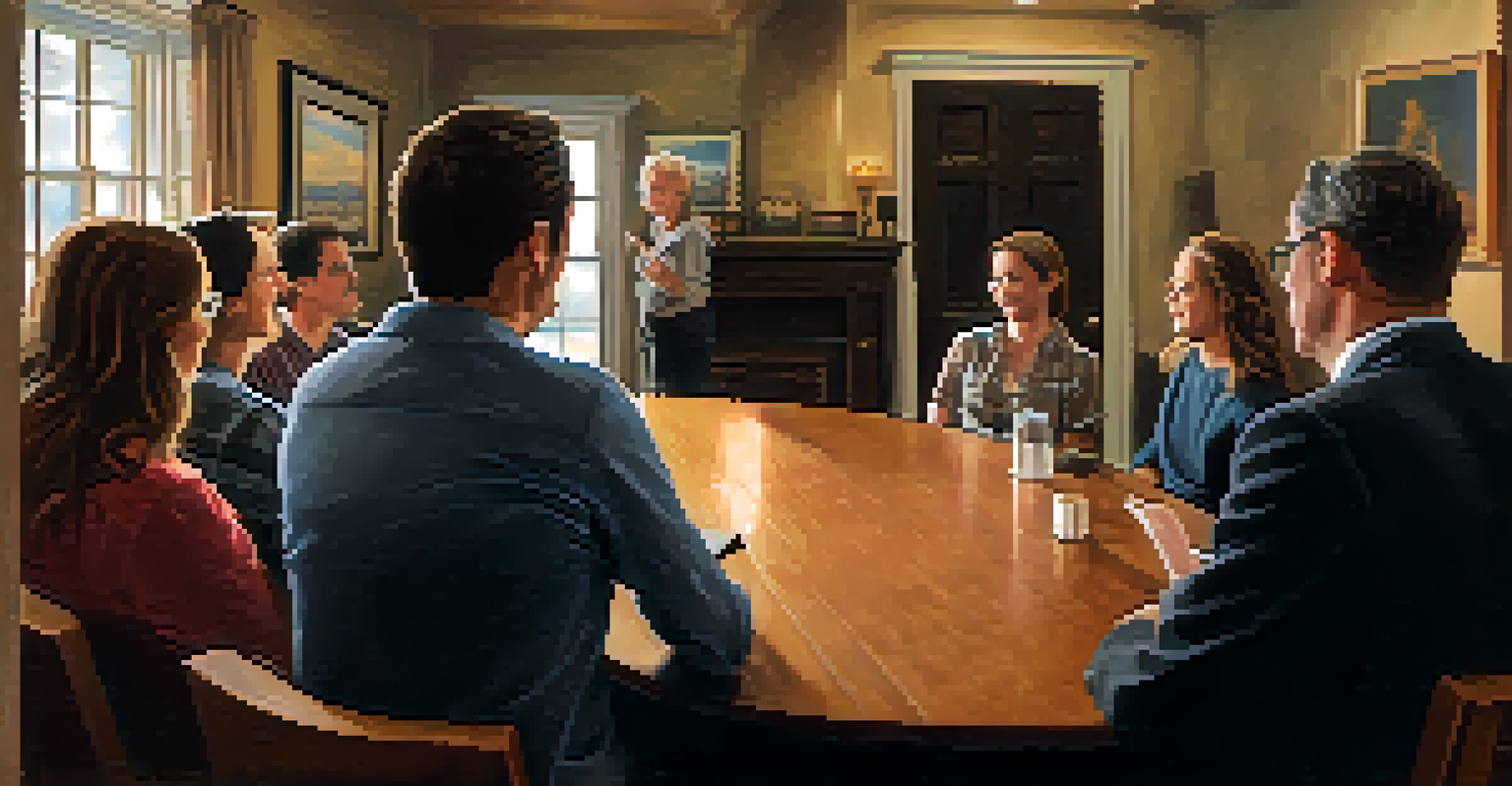How to Build Stage Presence: Captivating Your Live Audience

Understanding Stage Presence: What It Really Means
Stage presence is the ability to captivate and engage an audience while performing. It's more than just being physically present; it’s about creating an emotional connection. Think of it like a magnet that draws people in, making them want to listen and watch.
The most important thing in communication is hearing what isn't said.
Every great performer, whether in music, acting, or public speaking, has a unique stage presence that sets them apart. This charisma can be cultivated through practice and awareness. Remember, even the most confident-looking performers started somewhere, often feeling nervous at first.
Ultimately, stage presence is about authenticity. When you are true to yourself and your message, it resonates more deeply with your audience. They can sense when you're passionate, and that energy is infectious, making them more likely to engage.
Know Your Audience: Tailoring Your Performance
Understanding your audience is crucial for developing your stage presence. Each crowd is different, with varying interests, age groups, and cultural backgrounds. Taking the time to research or observe your audience can help you adjust your performance to resonate more effectively.

For instance, a TED Talk geared towards professionals will need a different approach than a rock concert. In the former, you'll want to emphasize clarity and expertise, while in the latter, energy and excitement are key. This adaptability shows your audience that you care about their experience.
Engage Your Audience Effectively
Understanding your audience and tailoring your performance can significantly enhance your stage presence.
Engaging with your audience can also involve asking questions or inviting participation. This creates a two-way interaction that not only makes them feel valued but also enhances your stage presence as someone who is relatable and approachable.
Body Language: Communicating Without Words
Your body language plays a significant role in how your audience perceives you. Confident posture, open gestures, and appropriate facial expressions can amplify your message. For example, standing tall with your shoulders back can convey confidence, while crossing your arms might suggest defensiveness.
Your audience is not a group of people; they are individual human beings who connect not only to your words but to your energy and presence.
Think of your body as an instrument that enhances your verbal communication. Just as a musician uses their instrument to express emotions, you can use your body to reflect your feelings and intentions. Practice in front of a mirror or record yourself to fine-tune your non-verbal cues.
Remember, your audience is always watching. They pick up on subtle signals, so being aware of your body language can help you establish a strong connection. A simple smile or eye contact can make a world of difference in how engaged your audience feels.
Vocal Variety: The Power of Your Voice
Your voice is one of your most powerful tools for captivating an audience. Varying your pitch, tone, and volume can keep listeners engaged and emphasize key points. Imagine a storyteller who uses soft whispers for suspense and loud exclamations for excitement; this dynamic approach pulls the audience in.
Practicing vocal exercises can help you explore the full range of your voice. From warming up your vocal cords to experimenting with different speaking styles, these exercises build confidence and versatility. Consider reading aloud with different emotions to discover how your voice can influence the mood.
Use Body Language Wisely
Body language communicates your confidence and emotions, making it a crucial element in connecting with your audience.
Additionally, pacing is important. Speaking too quickly can overwhelm your audience, while too slow can lose their interest. Finding a natural rhythm allows for better retention of your message and creates a more enjoyable experience for your listeners.
Practicing Mindfulness: Staying Present on Stage
Mindfulness is the practice of being fully present in the moment, which can significantly enhance your stage presence. It helps reduce anxiety and allows you to focus on your performance rather than worrying about what might go wrong. Techniques like deep breathing can ground you before stepping onto the stage.
One effective way to cultivate mindfulness is through visualization. Imagine yourself on stage, delivering a fantastic performance, and receiving a positive response. This mental rehearsal creates a sense of familiarity and comfort, making the real experience less daunting.
Incorporating mindfulness into your routine not only improves your presence but also enriches your overall performance. The more you practice staying present, the more connected you'll feel to your audience, making your message more impactful.
Engagement Techniques: Connecting with Your Audience
Engagement is key to building stage presence, and there are many techniques to connect with your audience. One effective method is storytelling; sharing personal anecdotes creates relatability and draws listeners in. Everyone loves a good story, and it makes your message memorable.
Another approach is to use humor when appropriate. A well-placed joke can lighten the atmosphere and make you more approachable. Just remember, humor should feel natural and align with your personality; forced jokes often fall flat.
Practice Mindfulness on Stage
Staying present through mindfulness techniques helps reduce anxiety and improves your overall performance impact.
Encouraging audience participation is another fantastic way to boost engagement. Whether it's asking questions or inviting volunteers, fostering interaction creates a shared experience that enhances your connection with the crowd.
Feedback and Adaptation: Learning from Every Performance
After each performance, gathering feedback is essential for growth. Whether it's from peers, mentors, or even audience members, constructive criticism can provide valuable insights into your stage presence. Embrace this feedback as a tool for improvement rather than a setback.
Consider recording your performances to review later. Watching yourself can reveal aspects of your stage presence you may not notice in the moment. This self-reflection allows you to identify strengths and areas for improvement, helping you to adapt for future engagements.

Remember, every performance is an opportunity to learn and evolve. The more you refine your skills and adapt to feedback, the more confident and captivating your stage presence will become.